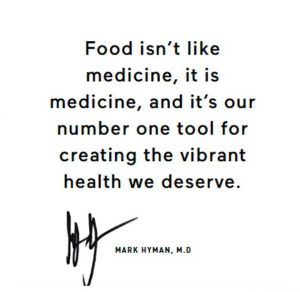The visible effects of aging are different for everyone, which is super unfair if you ask us.
“Aging affects us on a genetic level.”

This article is from our friends at HealthyWay
But rather than lament early crow’s feet or thinning hair, we decided to ask doctors what aging really is—what causes declining health over time—in the hopes of learning how we can slow down the unpleasant bits of growing older while enjoying the wisdom and greater clarity that often show up at the same time as your first gray hairs.
What we found out suggests that our lifestyles need to seriously change if we plan to keep a youthful look well into our golden years.
1. Your Contemporary Job
The sedentary lifestyle is literally killing us. Studies suggest that women who spend at least six hours a day in a chair are 34 percent more likely to die early, and their cancer risk increases by 10 percent. The risk of early death for similarly sedentary men is 17 percent.
One study even indicated that standing up every 30 minutes throughout the day can have similar health benefits as quitting smoking. Either way, the picture is bleak. And the problem goes deeper than a simple lack of exercise.
“This is not just about getting regular exercise, but also pertains to prolonged periods of sitting,” Hamilton tells HealthyWay. “Recent studies show that sitting too long can lead to higher mortality and early death.
Maybe you’ve heard that “sitting is the new smoking.” That’s pretty much what this study says, just with a lot more data and hard-to-read scientific lingo. There’s no shortage of studies showing how important it is to get off of our heinies every once in a while.
But it’s not that simple. So many of our jobs require us to sit at computers for eight hours a day. What can we do to mitigate the damage our careers are doing to our bodies?
Reporting by the Washington Post that included interviews with doctors, researchers, and biomechanists offer a few solutions. Sit on an exercise ball at work, they say. When you’re watching TV, get up and walk around every time there’s a commercial.
“This is applicable to many people with sedentary jobs,” Hamilton says. “People can simply stand and move at [their] workstation, walk down the hall, or take a bathroom break.” These are small things, but they add up over a lifetime—which may be considerably longer if you follow these suggestions.
2. Skipping the Cheese
You’ve probably heard that the “sunshine vitamin” helps our bodies build calcium into bone. In fact, vitamin D is crucial for preventing inflammation-related disorders that come with age.
Registered dietitian Maryann Tomovich Jacobsen reviewed and approved a list of the risks of a vitamin D deficiency that was published on WebMD, and they’re pretty scary.
The hazards of low levels of this crucial nutrient include aging-related dementia, cancer, and an increased risk of fatal cardiovascular disease. Ideal vitamin D levels differ from patient to patient, so ask your doctor if you’re getting enough through diet and time in the sun.
“Physicians recommend getting at least 10 minutes of sunlight (with sunscreen) every day and a balanced diet rich in vitamin D,” Hamilton says. “Some people may need to take…vitamin D supplements.”
There’s some good news for people who need to get more vitamin D into their diets, at least. Cheese is packed with the stuff. Not as much as cod liver oil, maybe, but which would you rather eat?
3. Laser-Focusing on Cardio
It’s hard enough to get to the gym in the first place. Once you’re there, it can be tempting to zone out on the bikes or the treadmill. Although cardio is great, there are real risks related to a lack of strength training.
“The aging process is associated with changes in muscle mass and strength with the decline of muscle strength after the 30th year,” write Karsten Keller and Martin Engelhardt in the journal Muscles, Ligaments, and Tendons.
While your muscles are wasting away, your metabolism slows down. This combination of factors can lead to unhealthy weight gain, which carries its own list of horrors. The point is, arm day may be more important than you think. Don’t neglect the weights.
4. Trying to Wring Even More Hours Out of the Day
We have a very sad fact to share. Brace yourself: Coffee cannot replace sleep. We know, we know. We’re grieving too.
The truth is that doctors are serious when they tell you to get between seven and nine hours of sleep a night, every night, at least between the ages of 18 and 64. Less than that could affect your productivity and, worse, encourage your arteries to harden. The importance of sleep cannot be stressed enough.
An article in the Harvard Business Review written by Harvard Medical School professor Charles Czeisler warns us that people who sleep less than five hours a night for five years in a row are three times more likely to develop hardened arteries.
“The importance of sleep cannot be stressed enough,” says Hamilton. “Sleep allows your body to process nutrients
taken in during the day and allows your mind to process events of the day.”
There isn’t really a problem that insufficient sleep doesn’t make worse. “Memory loss and mood disorders such as anxiety and depression have also been linked to sleep deprivation,” Hamilton says.
Even worse, skimping on your Zs can wreak havoc on your genes themselves, leading to DNA damage that raises your risk of cancer. We don’t know how to get more hours in the week either, but it’s clear that skipping sleep is not the way to do it.
5. Hating Your Job
If you want to live a long, happy life, free from the damaging effects of growing inflammation, you need to follow your passion. That’s not just a feel-good platitude; it’s medical science.
A systematic literature review published in the journal Occupational & Environmental Medicine found that “job satisfaction level is an important factor influencing the health of workers.”
Hating your job can even spark or exacerbate mental health issues, explains Hamilton.
“Mood disorders such as depression or anxiety can be linked to job dissatisfaction,” she says. “There is an intricate interplay between health and job satisfaction in which both affect each other. When dealing with mental health, it is important to assess outlook on work as well as work-life balance.”
This all makes perfect sense when you think about it. When you hate your job, you spend every day stressed out and angry. According to the American Psychological Association, chronic stress makes existing health problems worse. It encourages the formation of bad habits, such as smoking and overeating. It can even increase your risk of cardiovascular disease.
According to the latest report from the Pew Research Center, a discouraging 15 percent of working adults say they are “somewhat” or “very dissatisfied” with their jobs. But it’s important to remember that many of us do have other options. No matter how restricted you may feel, there’s always another job (or career!) out there, and remaining stuck in an unpleasant environment can actually speed up the aging process.
Tying It All Together
Okay, so what have we learned? Sleep enough, get off your behind, find a job you like, and work out. But no one of these things alone is enough to stop the hands of the clock entirely.
To hold off the visible signs of aging as long as possible, you need to adopt a holistic approach to health, says Ellie Cobb, PhD, a psychologist who focuses on the mind-body connection in wellness.
Aging affects us on a genetic level, Cobb tells HealthyWay, citing research by Elizabeth Blackburn and Elissa Epel that suggests the telomeres at the ends of our chromosomes actually shorten as we age. And these shorter telomeres that cause the negative health effects of aging. That’s because when these DNA caps reach a certain reduced length, the cells that contain them stop replicating. They die.
“The positive news is that scientific research also shows that we can change our telomere length by what situations we experience in life and how we chose to react to those experiences,” Cobb tells us.
So, like, how?
“Some positive ways to reduce inflammation (and therefore reduce negative aging effects) are [to] aim to get regular sufficient sleep, adopt a consistent meditation practice, be conscious of eating healthy fats and vegetables like avocados and leafy greens instead of refined sugars, exercise moderately, and find joy and thankfulness in the little things in life,” Cobb says.
So that’s it! Mindfulness is like calisthenics for your telomeres. We’ll see you and your lanky telomeres on the dance floor in many, many decades.

 Most people gain fat during the end-of-year holiday season. They eat anything and everything in sight. But, you don’t have to be “most people.”
Most people gain fat during the end-of-year holiday season. They eat anything and everything in sight. But, you don’t have to be “most people.” People often come to me saying they need to “work out more” to lose weight. And many of them shed plenty of pounds in two half-hour weekly personal training sessions with me. However, the truth is that you CANNOT out-train your diet, no matter how hard you work.
People often come to me saying they need to “work out more” to lose weight. And many of them shed plenty of pounds in two half-hour weekly personal training sessions with me. However, the truth is that you CANNOT out-train your diet, no matter how hard you work.
 We know that too much sugar is bad for our waistlines and our
We know that too much sugar is bad for our waistlines and our  It is not only about how you LIFT those weights, it’s about how you LOWER them, too! Slow, controlled lowerings help build muscle and strength faster.
It is not only about how you LIFT those weights, it’s about how you LOWER them, too! Slow, controlled lowerings help build muscle and strength faster. Vitamin D deficiency can be responsible for many different symptoms. How many of these do you have? Do you take Vitamin D daily? I recommend 5000 IU’s per day for those living in northern latitudes, especially in the winter when sunlight is diminished. Read this article from
Vitamin D deficiency can be responsible for many different symptoms. How many of these do you have? Do you take Vitamin D daily? I recommend 5000 IU’s per day for those living in northern latitudes, especially in the winter when sunlight is diminished. Read this article from  D.I.E.T. Let’s break this word down to the 1st 3 letters DIE, not very motivating!
D.I.E.T. Let’s break this word down to the 1st 3 letters DIE, not very motivating! Some advice is just so sound that I feel the need to share it. Your diet and nutrition are hugely important!
Some advice is just so sound that I feel the need to share it. Your diet and nutrition are hugely important!
